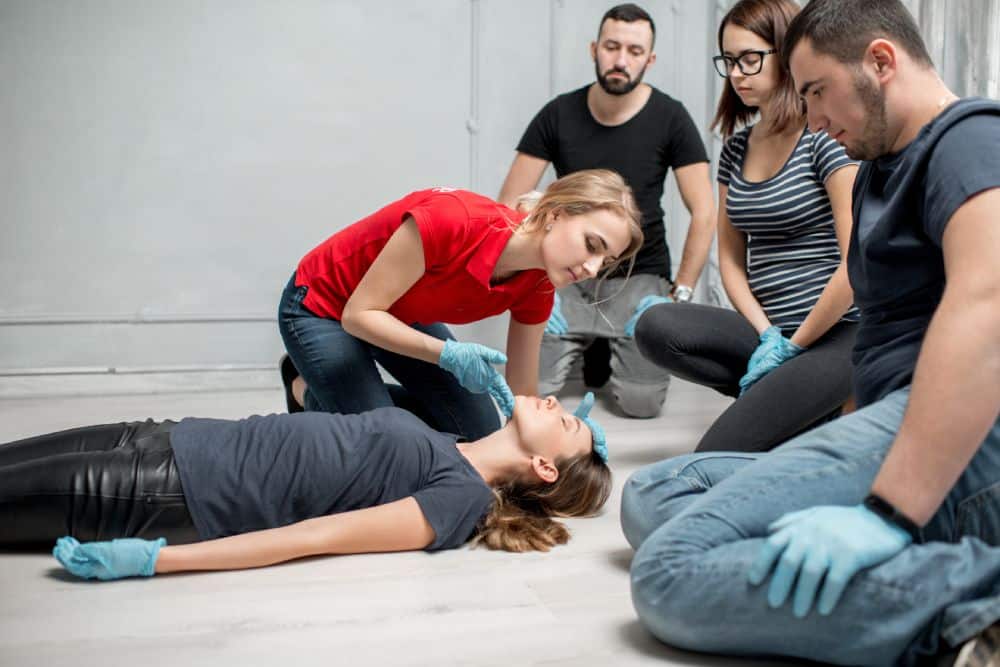Introduction
In our busy world, emergency situations can strike without caution. Whether it's a minor injury, a clinical emergency, or a dangerous circumstance, understanding just how to offer emergency treatment can make all the distinction. This is where a First Aid course enters play. Lots of people might question what they can gain from such training, and this write-up intends to clarify that.
By joining in a First Help and CPR course, you don't just learn about bandaging wounds or carrying out CPR; you equip on your own with invaluable skills that could save lives. So, just what will you learn in a thorough training course? Let's dive into the details.
First Aid Basics: What You'll Find out in a Detailed Course
Understanding First Aid
What is Very first Aid?
First help describes the preliminary aid offered to somebody struggling with an injury or illness until specialist medical assistance arrives. It incorporates various strategies and skills ranging from basic injury like lifesaving methods like CPR (Cardiopulmonary Resuscitation).
Importance of First Aid Training
Why Should You Take a First Aid Course?
Taking a First Help course is necessary for a number of reasons:
- Confidence: Recognizing just how to react in emergencies can infuse confidence. Life-Saving Abilities: The ability to perform mouth-to-mouth resuscitation or help with choking can save lives. Career Advancement: Lots of professions call for certification in first aid. Community Responsibility: Learning means you can aid others effectively.
Overview of CPR
What is CPR?
CPR, or Cardiopulmonary Resuscitation, is an emergency treatment done when a person's heartbeat or breathing has actually stopped. It combines breast compressions with rescue breaths to preserve blood flow and oxygenation till specialist aid arrives.
The Framework of a Comprehensive First Aid Course
What Does an Emergency treatment Course Include?
An all-round First Aid and CPR course normally covers the following subjects:
Introduction to First Aid Legal and Honest Considerations Scene Safety Basic Life Support (BLS) CPR Techniques Choking Relief Wound Treatment Management Burn Treatment Managing Shock Recognizing Clinical Emergencies Using an Automated External Defibrillator (AED)Legal Elements of First Aid
Are There Legal Implications Involved in Offering First Aid?
Yes, providing first aid does lug legal duties called "Good Samaritan regulations." These laws protect individuals that aid others in emergencies, supplied their activities are reasonable and not reckless.
Scene Safety: The First Step
How Do You Make certain Scene Safety?
Ensuring scene security involves assessing the setting before coming close to the victim:
- Look for potential dangers (traffic, fire). Make sure it's secure for both you and the victim.
Basic Life Support (BLS)
What Duty Does BLS Play in Emergency Situation Situations?
Basic Life Support consists of the basics of keeping life functions until further clinical aid gets here. This section covers essential abilities such as:
- Checking responsiveness Activating emergency services Performing high-grade chest compressions
Advanced CPR Techniques
What Are Advanced Techniques Covered in Mouth-to-mouth Resuscitation Courses?
Advanced methods might consist of:
- Two-rescuer CPR Use of obstacle devices for rescue breaths Special considerations for babies and youngsters
Choking Relief Techniques
How Do You Aid Somebody Who is Choking?
Choking alleviation includes two vital methods:
The Heimlich maneuver for adults. Back impacts and breast drives for infants.Wound Treatment Management
How Do You Effectively Handle Wounds?
Effective wound administration involves:
- Cleaning the injury with saline or clean water. Applying antibiotic ointment. Covering it with sterilized dressings.
Burn Treatment
What Are Effective Techniques for Dealing With Burns?
Burn therapy varies by level:
Cool the burn under running water. Cover it with non-stick dressings. Seek clinical focus for severe cases.Managing Shock
How Is Shock Acknowledged and Treated?
Recognizing shock includes looking for signs like light skin, rapid pulse, or confusion:
Lay the individual down. Elevate their legs unless there are injuries stopping this. Keep them relax till help arrives.Recognizing Clinical Emergencies
What Kinds of Medical Emergencies Should You Know Of?
Common clinical emergency situations consist of:
- Heart strikes Stroke Severe allergic reactions Understanding these conditions helps you act quickly.
Using an Automated External Defibrillator (AED)
How Do You Use an AED Correctly?
Using an AED involves turning it on, affixing pads according to pictures on the tool, and following voice prompts carefully.
Importance of Continual Learning
Why Is Continual Knowing Important in First Aid Training?
Continuous discovering ensures you remain upgraded on ideal practices and new protocols in first aid care.


FAQs About Emergency treatment Courses
What Is Included in a Standard Emergency Treatment Course?- A common training course typically covers basic life assistance, wound management, choking alleviation strategies, and lawful considerations.
- Most programs vary from 6 hours to 16 hours relying on the deepness of material covered.
- Yes, upon effective completion of a lot of training courses, participants receive a first aid certificate, which is generally valid for 2 years.
- Yes! Lots of organizations use online training courses that provide adaptable discovering atmospheres while still being effective.
- Absolutely! Hands-on method is essential for understanding abilities like chest compressions and utilizing AEDs effectively.
- Generally, there are no age restrictions; nonetheless, individuals should be emotionally competent to learn these life-saving skills effectively.
Conclusion
Enrolling in a detailed first aid course equips people with vital understanding that can save lives throughout emergencies-- whether at home, work, or out in public areas! From understanding standard life assistance treatments like mouth-to-mouth resuscitation to learning how to handle injuries correctly or recognize indicators of shock-- these courses Child Care First Aid Course Near Me supply important training that anybody can profit from!

As we navigate via our lives filled with changability-- what far better method than preparing ourselves with knowledge obtained from structured training sessions focused on saving lives?
In conclusion-- if you're pondering using up any kind of form of first-aid training-- never think twice! Furnish on your own today with these powerful devices due to the fact that preparedness genuinely makes all Child Care safety and First Aid the distinction when every 2nd counts!